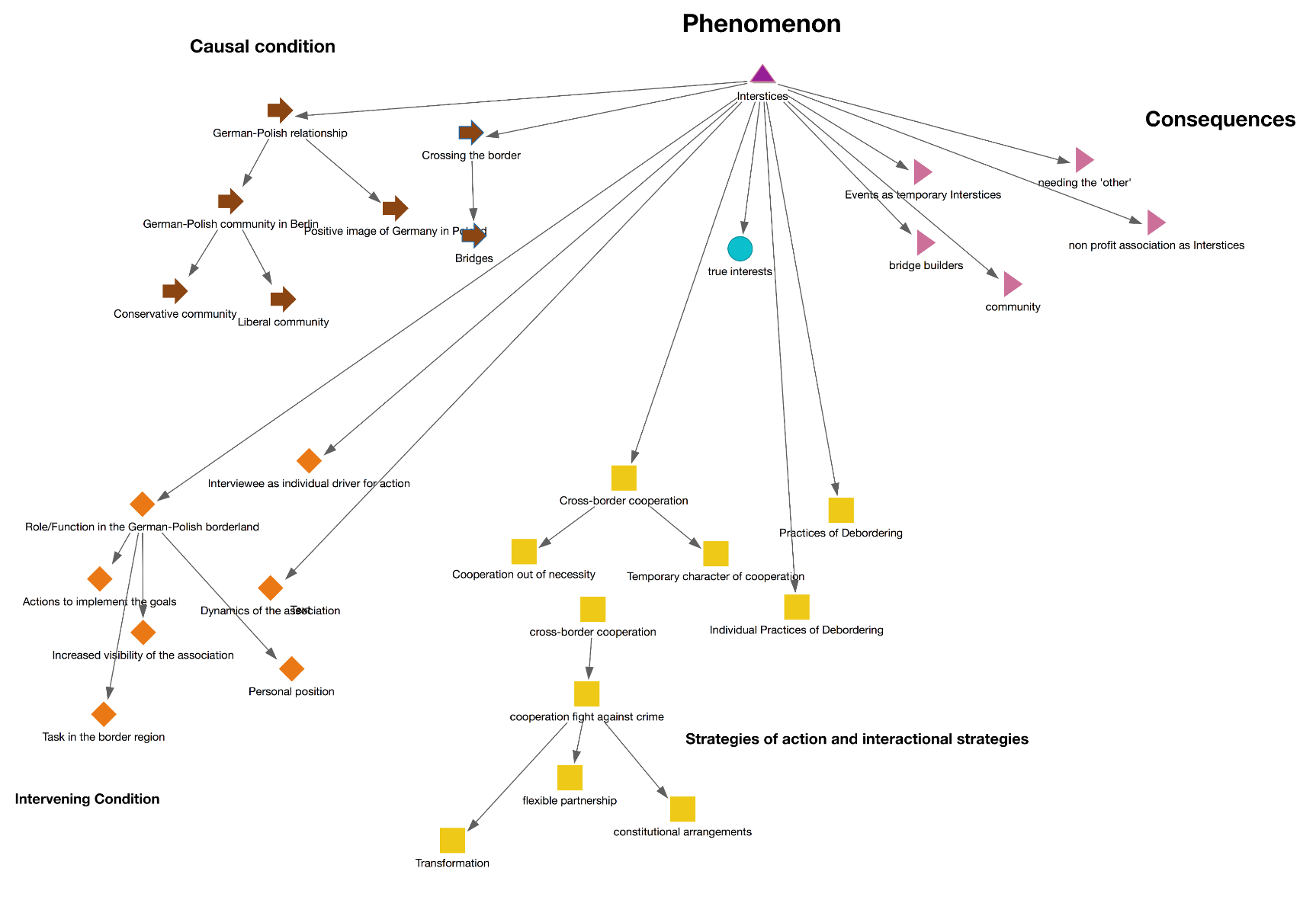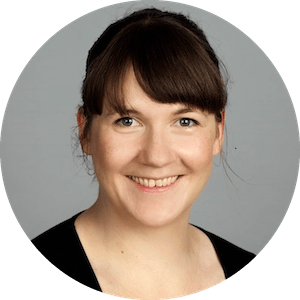Guest post by Vivien Sommer.
The project we are currently working is called “Socio-spatial Transformations in German-Polish ‘Interstices’: Practices of Debordering and Rebordering” (“De-Re-Bord”). My team includes researchers from the department of Dynamics of Communication, Knowledge and Spatial Development at the Leibniz Institute for Research on Society and Space, and the Adam Mickiewicz University in Poznań.
Developing Grounded Concepts of De-Bordering, Re-Bordering, and Interstices
We are investigating socio-spatial transformation processes on either side of the German-Polish border, from its opening in 2007 to 2019. Although much research concerning border regions has been done, only a small amount is known about how socio-spatial transformations in these areas take place. In addition, studies have thus far barely contributed to spatial theory. Our project addresses this gap in the research by focusing on the question of “how might debordering, rebordering, and potential “interstices” can be systematized?”.
We will seek to answer our research question by focusing on local discourses, on space-related knowledge, and on the practices both of local residents and other local actors. More specifically in regard to these practices, we will examine mobility patterns as well as materialities of debordering and rebordering. We are using MAXQDA 2018 to conduct our data collection and analysis.

Poznań, Poland
Data Collection: Field protocols, Participant Observation, and Expert Interviews
We are currently analyzing our field notes from participant observation in several border regions as well as the transcripts of expert interviews. In the spring and summer of 2018, we conducted participant observation during on-site visits, both in the immediate surroundings of the border at Frankfurt/Oder and Slubice and in the rural area of Grießen and Późna, as well as at mobility hubs in Berlin and Poznań.
Since the fall of 2018, we have also conducted expert interviews with local actors engaged in formal cross-border co-operation, including representatives of local authorities in the border regions, local journalists, people working in border services (such as in the Federal Border Guard), chairmen from local civil society associations, employees of transport companies, and bloggers interested in the subject of the border.
Data Analysis with MAXQDA 2018: Grounded Theory Approach
We started our data analysis with an open coding phase, based on a grounded theory approach to data qualitative data analysis. Our coding phase was conducted in two steps:
- First, we developed in-vivo codes directly from the data.
- As a second step, we grouped these codes in relation to our analytical categories, which were “Practices of Debordering”, “Practices of Rebordering”, and “Interstices”.
As illustrated in Figure 1, we listed these in-vivo codes as subcodes under the parent code “Practices of Debordering” in MAXQDA’s “Code System” window. This method of dividing the codes helped provide us with an initial direction of how the codes generated from the data could be systematized under the concept of debordering.

Figure 1: Open Coding “Practices of Debordering”
Axial Coding with MAXMaps
However, this strategy of grouping codes was just the beginning of our analysis process. Following the open coding phase, our aim was to go deeper into the relationships between our subcodes and analytical categories.
Based on Strauss and Corbin’s approach of axial coding, we used the paradigm model to generate possible relationships between the codes and to develop grounded concepts. In this context, we used MAXQDA’s MAXMaps feature to group the codes and the respective categories.
We defined the respective analytical category as a central phenomenon and assigned the respective code groups to the other units of the axial paradigm: such as the causal conditions of a phenomenon, its consequences, the context, as well as strategies and actions and their intervening conditions.
Figure 2 illustrates our process of axial coding using MAXMaps: we defined the category “Interstices” as a phenomenon, and related the previous codes we generated during the open coding phase to this category. For example, in our map, we chose to represent codes that could be defined as consequences of a phenomenon by coloring them brown and linking them with arrows.

Figure 2: Axial Coding “Interstices“
Further categories
As mentioned above, the three categories “Interstices”, “Debordering”, and “Rebordering” were the main categories in our study – and in our coding processes, they functioned as top-down codes; but that did not mean that we were not open to other categories that resulted from analyzing our data!
Figure 3 illustrates one of the categories which emerged from the bottom up during the axial coding process. In this phase it quickly became clear to us that not only “Interstices” but also “Missing Interstices” was an important category to work with.

Figure 3: Axial Coding “Missing Interstices”
During the analysis of our data, we realized that there is still much potential for cross-border cooperation, but such opportunities have not yet been used sustainably or comprehensively. These missed opportunities can be summarized as missing interstices.
MAXQDA’s MAXMaps feature helped us to visualize the axial coding and, through this visualization, define categories and their relationship with each other. The flexibility of MAXQDA’s tools allowed us to develop a reflexive understanding of our coding process, especially when we used these visualizations in our data session with the project leaders and other members of our department. It allowed them to easily and clearly follow the interpretations we made through our axial coding analysis steps.
Looking Ahead
The theoretical interest of the project lies in the issue of how the empirical findings on socio-spatial transformation processes can be conceptualised. Of particularly use here is communicative constructivism, with its implications for spatial theory, actor-network theory, and conceptual approaches to mobility. Another central question is how the spatio-temporal processes of transformation can be described. In this context, theoretical work on border regions should see itself advanced.
In our third phase of data collection, we will focus on knowledge and practices, including aspects of materiality and mobility, in residents’ everyday lives. Participants will be asked to create spatial-temporal visual diaries. In order to reconstruct the materiality of borders, we will use the walking-with-video technique. We also plan to use MAXQDA to analyze the multi-modal data we collect during this phase.
For further information about our research, please visit the project webpage.
About the Author
Vivien Sommer is a research associate in the research department „Dynamics of Communication, Knowledge and Spatial Development”. As a postdoc, she is part of the DFG-funded project “Socio-spatial Transformations in German-Polish ‘Interstices’”. Practices of Debordering and Rebordering”.
Vivien Sommer studied Sociology, Philosophy, Journalism, and Communication science at the Free University Berlin (2002-2008). She earned her doctoral degree at the Chemnitz University with a media study on “Memory Practices in Online Discourses. The case of John Demjanjuk in the World Wide Web”. Her research focuses on discursive practices in border regions, the Internet, and memory cultures. She has strong interests in methods, especially in qualitative methods, mixed methods, and visual methods.

 Vivien Sommer is a research associate in the research department „Dynamics of Communication, Knowledge and Spatial Development”. As a postdoc, she is part of the DFG-funded project “Socio-spatial Transformations in German-Polish ‘Interstices’”. Practices of Debordering and Rebordering”.
Vivien Sommer is a research associate in the research department „Dynamics of Communication, Knowledge and Spatial Development”. As a postdoc, she is part of the DFG-funded project “Socio-spatial Transformations in German-Polish ‘Interstices’”. Practices of Debordering and Rebordering”.


